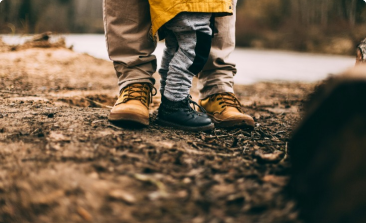Things to monitor(Third trimester)
Things to monitor
You’re nearing the home stretch, but there’s a lot to do in the meantime. Here are the top to-dos for the third trimester.
Track the movement of the foetus. From around week 28, you should start counting your baby’s kicks regularly and noting any changes in activity, especially around the 9th month.
Watch your weight. Your pregnancy weight gain accelerates in the early third trimester and slows as your due date approaches. You may even lose a pound or two. If you haven’t gained enough weight or gained too much, work with your doctor to adjust your pregnancy diet to get back on track.
Keep moving! As long as you have your doctor’s okay and follow some fitness safety precautions, you can safely continue your pregnancy-safe exercises until your due date.
Schedule your third trimester check-ups. Expect your glucose screening around week 28 (or early in month 7) if you haven’t already had it, an anaemia test at month 7, and your group B strep test at month 9. Also at your ninth month your doctor will do an internal exam of your cervix to see if obliteration and dilation (the thinning and opening of your cervix) has started. If you’re classified as “high risk,” your doctor may also schedule a biophysical profile or non-stress test in the final few weeks just to make sure everything is going as expected.
Do a hospital tour. If you haven’t already, month 7 is a great time to take a tour of the hospital or birthing centre where you plan to give birth.
Choose your baby’s paediatrician. Interview a few candidates with a list of questions around week 32 and pick your favourite.
Buy baby equipment. Make sure you have the necessary baby equipment – specifically a crib, a stroller, a car seat (which you will need to bring your baby home from the hospital), a changing table and a baby monitor. With this in mind: Have your car seat professionally installed.
Get formed In addition to taking a antenatal class — which will help you feel more prepared for the entire birthing process — you may also want to consider infant resuscitation and baby care classes.
Prepare for breastfeeding if you plan to do so. The best time to learn about breastfeeding is before the baby is born. You may even want to take a breastfeeding class or hire a doula or lactation consultant for advice or help now or later if you need it.
Find out more about the work phases. Prepare for your baby’s birthday by learning what to expect during early, active, and transitional labour, as well as baby pushing and delivery of the placenta.
Think about how you want to treat labour pain. Would you like an epidural or other medication to treat labor pain? Are you considering a natural birth, possibly in a birthing pool? Now it’s time to discuss your options with your doctor.
Check your birth plan. Whether you want an epidural or not, by when and who cuts the umbilical cord, create or finalize your birth plan. (Just remember, when it comes time to push the baby out, things don’t always go exactly as planned – the most important thing is that you and your baby stay safe and healthy!)
Furnish your children’s room. Get all the essentials you need for your child’s room. And don’t forget baby essentials like bottles, baby clothes, nappies, wipes, pacifiers and formula (if you don’t plan to breastfeed).
Remember your baby bump. Take some nice bump shots – you can hang them up in the nursery or add them to your baby’s photo album later.
Stock your fridge. You may want to prepare a few meals to keep in your freezer for the first few weeks when you are busy with a new baby and recovering from the birth.
Plan financially. The costs of having a baby can add up quickly, so create a new family budget and start following it accordingly.
Pack your hospital bag. Pack light—but don’t forget a few home comforts you’ll want to take with you to the hospital.
Arrange a cord blood bank. If you’re considering cord blood storage – public or private – make sure your doctor is aware of your plans, and don’t forget to pack a cord blood kit that the bank will send you in your hospital bag.
Find out what happens after childbirth. Find out what happens after childbirth as your body repairs itself and you begin to adjust to your new role.
Prepare for your baby’s first year. Find out about all the exciting milestones in your baby’s first year – there’s so much to look forward to!















































